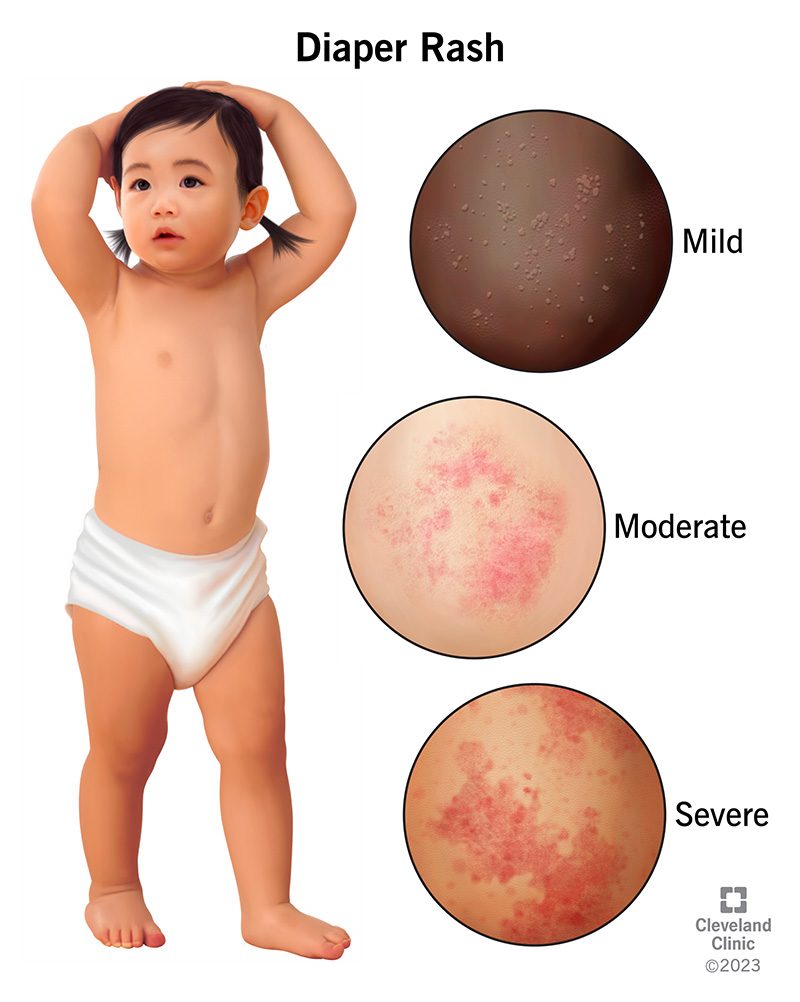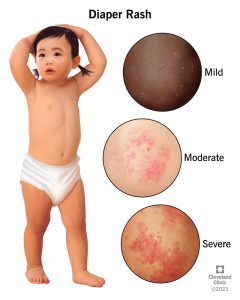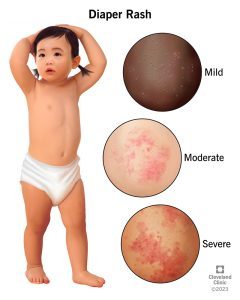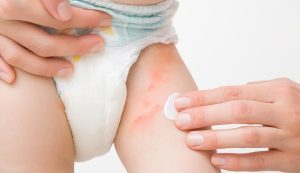Different types of diaper rash can be identified through pictures, helping parents understand and treat the issue effectively.

Types Of Diaper Rash
When it comes to diaper rash, there are several types that parents should be aware of to effectively address and treat the issue. The three main types of diaper rash are Irritant Diaper Rash, Yeast Diaper Rash, and Allergic Diaper Rash.
Irritant Diaper Rash
An irritant diaper rash is the most common type and typically occurs due to prolonged exposure to wet diapers or irritants like baby wipes or detergents.
Yeast Diaper Rash
Yeast diaper rash is caused by the Candida fungus and often appears as bright red patches with defined borders, typically located in the folds of the skin.
Allergic Diaper Rash
Allergic diaper rash is a reaction to a particular substance, such as a diaper brand or certain foods, leading to redness, itchiness, and sometimes blistering.
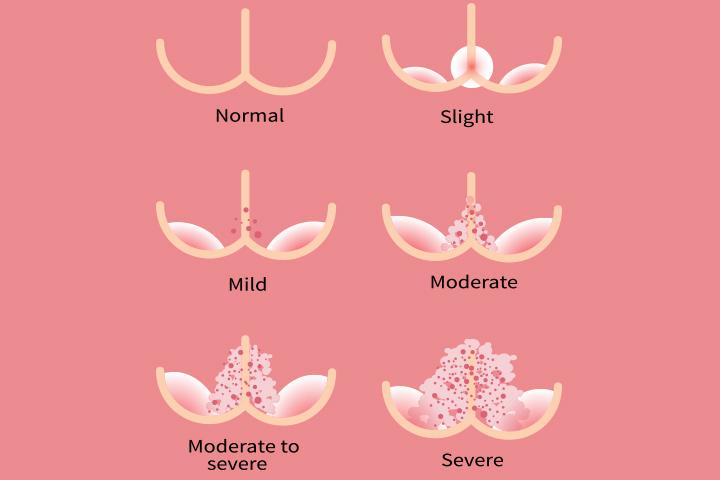
Identifying Common Diaper Rash Images
When it comes to dealing with diaper rash, visual identification plays a crucial role in determining the best course of treatment. Whether you’re a new parent or an experienced caregiver, being able to recognize the different types of diaper rash can help you address the underlying cause and provide relief for your little one.
Characteristics Of Irritant Diaper Rash
An irritant diaper rash is the most common type, often caused by prolonged exposure to urine or stool. This rash typically appears as red patches on the buttocks, genitals, and thighs, with the affected skin feeling warm to the touch. It may also show signs of chafing, tenderness, and peeling.
Visual Cues For Yeast Diaper Rash
Yeast diaper rash is typically caused by an overgrowth of Candida fungus. This type of rash is characterized by bright red, beefy patches with well-defined borders. The affected areas may have small, raised bumps and may appear to be scaly or surrounded by tiny red dots. In severe cases, the rash may spread to the folds of the skin.
Symptoms Of Allergic Diaper Rash
Allergic diaper rash occurs when the sensitive skin of the baby reacts to certain irritants, such as fragrances or certain diaper materials. This rash usually appears as patches of redness with small bumps or blisters. It may be accompanied by itching, swelling, and discomfort. If the rash persists even after changing diaper brands or detergents, it may indicate an allergic reaction.
Diagnosis And Treatment
Diaper rash is a common condition that affects many babies and young children. When it comes to diagnosis and treatment, it’s important to understand the different types of diaper rash pictures to determine the best course of action. Identifying the specific type of rash can help in choosing the most effective treatment. Additionally, knowing when to seek medical advice and the options for home remedies versus medical interventions is crucial for managing and alleviating diaper rash.
When To Consult A Doctor
If a diaper rash persists for more than a few days despite using home remedies or over-the-counter treatments, it’s essential to consult a pediatrician. Additionally, if the rash is accompanied by fever, pus-filled sores, or appears to be spreading rapidly, seeking medical advice is crucial. A doctor can provide a comprehensive evaluation and recommend specific treatment options based on the severity and type of diaper rash.
Home Remedies Vs. Medical Interventions
Home remedies, such as frequent diaper changes, gentle cleansing with mild soap and water, and applying barrier creams, can often effectively alleviate mild diaper rash. However, for more severe or persistent cases, medical interventions may be necessary. These interventions can include prescription-strength barrier creams, antifungal or antibacterial medications, and in some cases, corticosteroid creams. A healthcare professional can assess the severity of the diaper rash and provide appropriate medical interventions to promote healing and relieve discomfort.
Prevention Strategies
Preventing diaper rash is essential for your baby’s comfort and health. By implementing proper prevention strategies, you can minimize the occurrence of diaper rash.
Proper Diapering Techniques
- Change diapers regularly to keep the area dry.
- Ensure the diaper is not too tight to allow proper air circulation.
- Use mild baby wipes to clean the diaper area gently.
- Apply a protectant diaper cream during diaper changes.
Choosing The Right Diapers
- Opt for breathable diapers to prevent moisture buildup.
- Select diapers made of soft, hypoallergenic materials.
- Avoid diapers with excessive chemical additives.
- Consider eco-friendly disposable or cloth diapers.
Parenting Tips
The following parenting tips can help prevent and treat diaper rash effectively:
Maintaining Dry And Clean Skin
Keeping your baby’s skin dry and clean is crucial to prevent and treat diaper rash. Here’s how you can do it:
- Change diapers frequently: Regularly changing diapers, at least every two to three hours, helps keep your baby’s skin dry and fresh.
- Avoid tight diapers: Using snug-fitting diapers may increase the chances of diaper rash. Opt for diapers that are breathable and provide ample space for air circulation.
- Use a barrier cream: Applying a thin layer of barrier cream, such as zinc oxide or petroleum jelly, between diaper changes creates a protective barrier against moisture and irritation.
- Allow diaper-free time: Giving your baby some diaper-free time allows their skin to breathe and reduces the risk of diaper rash. Lay down a waterproof mat and let them enjoy some naked time.
Importance Of Regular Diaper Checks
Regularly inspecting your baby’s diaper is essential for early detection and proper management of diaper rash. Here’s why it matters:
- Early identification: Examining the diaper area frequently helps spot any signs of redness, inflammation, or discomfort, enabling early intervention.
- Prompt treatment: By identifying diaper rash early on, you can promptly implement appropriate treatment measures, such as applying an ointment or seeking medical advice if necessary.
- Monitoring effectiveness: Regular diaper checks allow you to assess whether your current prevention and treatment strategies are effectively managing the diaper rash.
- Preventing complications: Timely intervention through regular diaper checks minimizes the risk of complications, such as secondary infections, which can exacerbate diaper rash symptoms.
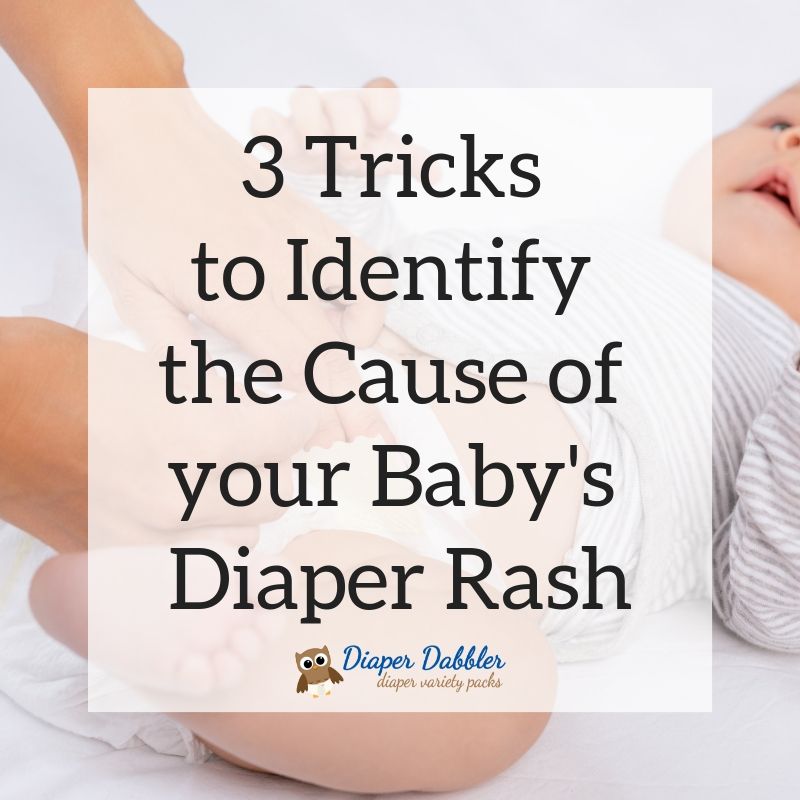
Common Mistakes To Avoid
When dealing with diaper rash, it’s crucial to be aware of common mistakes to avoid in managing and treating the condition. These mistakes can further aggravate the rash, prolonging your baby’s discomfort. Here are the key pitfalls to steer clear of:
Ignoring Persistent Rashes
Ignoring persistent rashes can lead to worsening symptoms and prolonged discomfort for your baby. It is essential to address any diaper rash that persists beyond a few days to prevent further irritation.
Overusing Diaper Creams
Overusing diaper creams can create a barrier that traps in moisture, exacerbating the rash. Applying a thick layer of cream every diaper change is not necessary and can hinder the healing process.
What Does A Bacterial Diaper Rash Look Like?
A bacterial diaper rash presents as red, irritated skin with pustules and may be warm to the touch. It can be accompanied by fever or pus-filled sores. Seeking medical attention is essential for proper treatment.
How Can You Tell If A Diaper Rash Is Serious?
A serious diaper rash may have open sores, blisters, or pus-filled bumps. It may also be accompanied by a fever. If you notice any of these symptoms, it’s important to consult a pediatrician for proper diagnosis and treatment.
How Do I Know If My Diaper Rash Is Fungal Or Bacterial?
To determine if your diaper rash is fungal or bacterial, look for specific symptoms like red, inflamed skin with raised borders or pustules (indicating a bacterial infection) and satellite lesions, itching, or a yeast-like odor (indicating a fungal infection). Consult a healthcare professional for an accurate diagnosis and appropriate treatment.
What Does A Yeast Diaper Rash Look Like?
A yeast diaper rash appears red with satellite red spots surrounding the main rash area. It can also have small red pimples.
Conclusion
Understanding the different types of diaper rash through pictures can greatly assist parents in identifying and effectively treating their child’s discomfort. Whether it is a contact rash, yeast infection, or bacterial rash, visual cues enable parents to take prompt action and seek appropriate medical advice if required.
By being familiar with these types of rashes and implementing preventive measures, parents can ensure their baby remains comfortable and happy. ” types of diaper rash pictures, types of diaper rash pictures “

